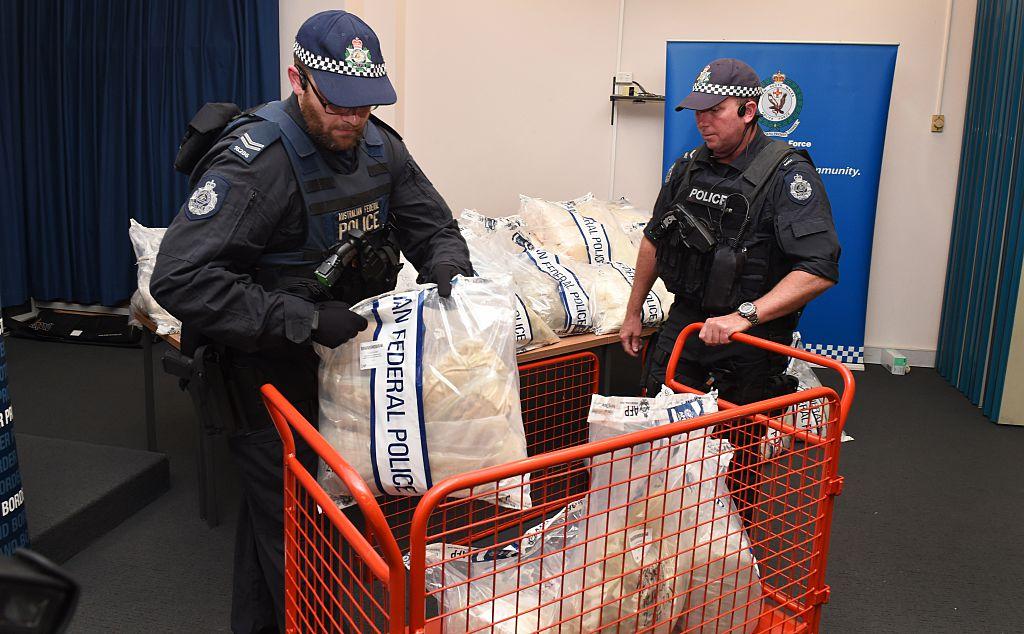Reducing illicit drug use in Australia isn’t all about cutting supply
Posted By John Coyne on December 13, 2021 @ 12:30

The development of evidence-based strategies for dealing with illicit drugs has always been challenging for governments. One of the most complicating factors is that a health issue, addiction, has been criminalised to combat those seeking to profit from the misery that it brings. The global criminalisation of the illicit drug trade and drug use reduces the visibility of the scale and scope of the problem.
The covert nature of illegal drug supply chains and their serious and organised crime facilitators then obfuscates all but the most visible impacts. Australian law enforcement’s seizures before, at and after our borders are impressive, but the correlation between these successes and decreased drug availability and consumption has been difficult to measure. Until now.
In early 2017, many of the country’s top police predicted [1] that the Australian Criminal Intelligence Commission’s National Wastewater Drug Monitoring Program [2] would make surprising discoveries about the scale of our national drug problem. And they were right.
The program involves the analysis of wastewater from treatment plants across Australia. These samples are analysed to identify markers of illicit and licit drugs. With this data, the ACIC has provided an estimate of the quantities of illegal drugs consumed in Australia.
In October, the ACIC released the 14th report of the program [3]. As you’d expect, there are many variances in usage across drugs and locations. The data does, however, provide a robust evidence base for policymakers. It tells the story of whether and how law enforcement operations affect usage rates across different types of drugs. It also shows where the hotspots are in terms of use.
Let’s for a moment consider the use of methamphetamine or ‘ice’. For more than a decade, methamphetamine use has had a devastating health and safety impact on Australian communities from the bush to our cities. The stories from medical professionals, police and family members tell a tragic tale of violence and heartache.
In April 2015, the government established a national ice taskforce [4] to advise on the impacts of ice in Australia and drive the development of a national ice action strategy. The taskforce delivered its final report [5] to the prime minister in October 2015 and it was publicly released in December of that year.
The ACIC’s wastewater monitoring [2] reports show that, despite the best efforts of health professionals and law enforcement, the amount of ice consumed in our community skyrocketed from 2018 to 2020.
This didn’t happen because law enforcement wasn’t doing its job. The ACIC’s illicit drug data report [6] for 2019–20 reveals that law enforcement seized 9,408 kilograms of methamphetamine during that year—up a whopping 1,415% from 2010–11. They also arrested 44,847 alleged offenders, up 322% from 2010–11.
Earlier this year, the multinational Operation Ironside [7] led by the Australian Federal Police resulted in the seizure of 3.7 tonnes of drugs, 104 weapons, $45 million in cash, and assets expected to run into the millions of dollars.
So, what’s the problem? Well, it seems from the latest ACIC report that these operational results are not actually having a marked impact on illicit drug supply or use. Law enforcement’s role in Australia isn’t to seize more drugs but to reduce criminal threats and promote safety and security in our communities.
Report 14 [3] shows that, nationally, the average daily level of methylamphetamine use remained at approximately 40 doses per 1,000 people for December 2020 and April 2021.
Australia’s federal, state and territory governments are still very much resistant to treating illicit drug addiction as a health issue. While that remains the case, they have no better option than to make better use of the National Wastewater Drug Monitoring Program. Now that the program has run for more than three years, its data needs to be used to guide policy decisions on strategies to reduce supply and demand and to cue geographically targeted harm-minimisation efforts.
As a starting point, the federal government should consider adopting total illicit drug consumption, as measured by the wastewater monitoring program, as a key performance measure for its primary law enforcement agencies: the Australian Federal Police, the Australian Border Force and the ACIC. In doing so, the Parliamentary Joint Committee on Law Enforcement could undertake an annual inquiry into the effectiveness of law enforcement in reducing the consumption of illicit drugs.
This approach needn’t mean that law enforcement shouldn’t still focus on and measure seizures. Instead, this additional measure will afford government and law enforcement an opportunity to better quantify the effect of these seizures and arrests. Initially, doing so will likely reveal problems with some of our supply-reduction strategies. However, it will have substantial long-term benefits in making our communities safer and more resilient.
Article printed from The Strategist: https://aspistrategist.ru
URL to article: /reducing-illicit-drug-use-in-australia-isnt-all-about-cutting-supply/
URLs in this post:
[1] top police predicted: https://www.policyforum.net/australias-wastewater-says-countrys-drug-problem/
[2] National Wastewater Drug Monitoring Program: https://www.acic.gov.au/publications/national-wastewater-drug-monitoring-program-reports
[3] report of the program: https://www.acic.gov.au/sites/default/files/2021-10/National%20Wastewater%20Drug%20Monitoring%20Report%2014.pdf
[4] national ice taskforce: https://www.pmc.gov.au/domestic-policy/taskforces-past-domestic-policy-initiatives/national-ice-taskforce
[5] final report: https://www.pmc.gov.au/resource-centre/domestic-policy/final-report-national-ice-taskforce
[6] illicit drug data report: https://www.acic.gov.au/sites/default/files/2021-10/IDDR%202019-20_271021_ATS.pdf
[7] Operation Ironside: https://www.afp.gov.au/news-media/media-releases/afp-led-operation-ironside-smashes-organised-crime
Click here to print.